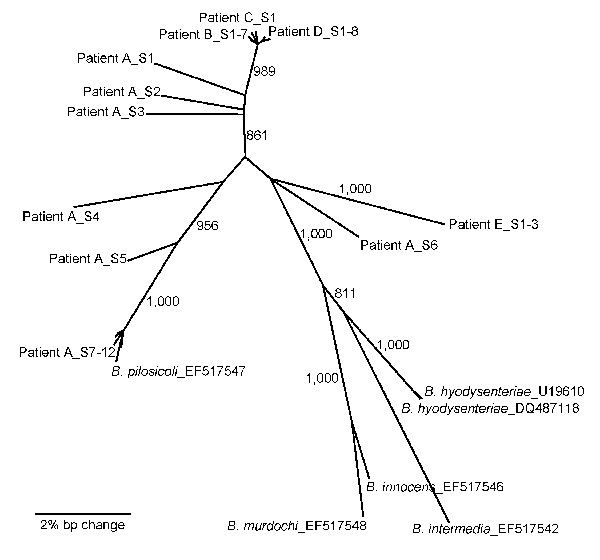Volume 15, Number 4—April 2009
Dispatch
High Prevalence of Spirochetosis in Cholera Patients, Bangladesh
Figure

Figure. Neighbor-joining (NJ) phylogeny of NADH oxidase (nox) sequences of Brachyspira pilosicoli from 5 cholera patients (A–E). The nox sequences were PCR amplified, cloned, and sequenced from each patient (individual clones are appended _SX). Published sequences from known species are included for reference. NJ analysis was performed by using an NJ model and 1,000 bootstraps. Bootstrap values >800 are presented next to nodes. The scale bar indicates a 2% bp change (contiguous sequence ≈990 bp).
Page created: December 10, 2010
Page updated: December 10, 2010
Page reviewed: December 10, 2010
The conclusions, findings, and opinions expressed by authors contributing to this journal do not necessarily reflect the official position of the U.S. Department of Health and Human Services, the Public Health Service, the Centers for Disease Control and Prevention, or the authors' affiliated institutions. Use of trade names is for identification only and does not imply endorsement by any of the groups named above.